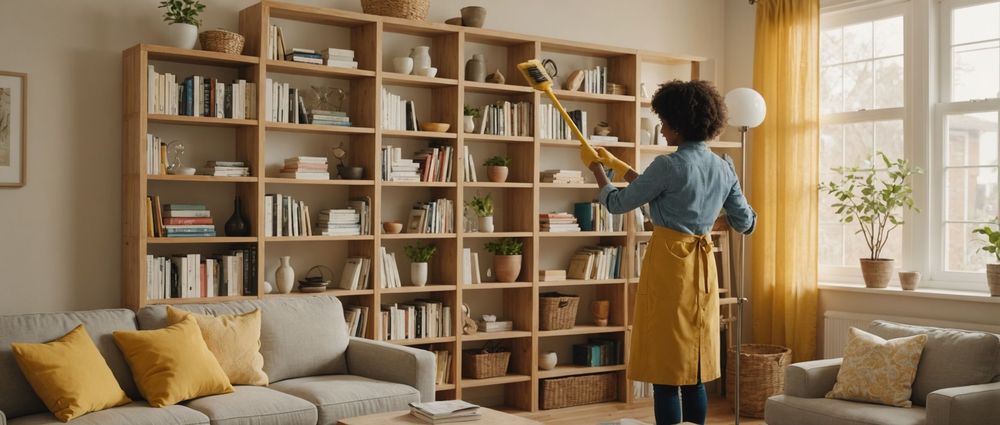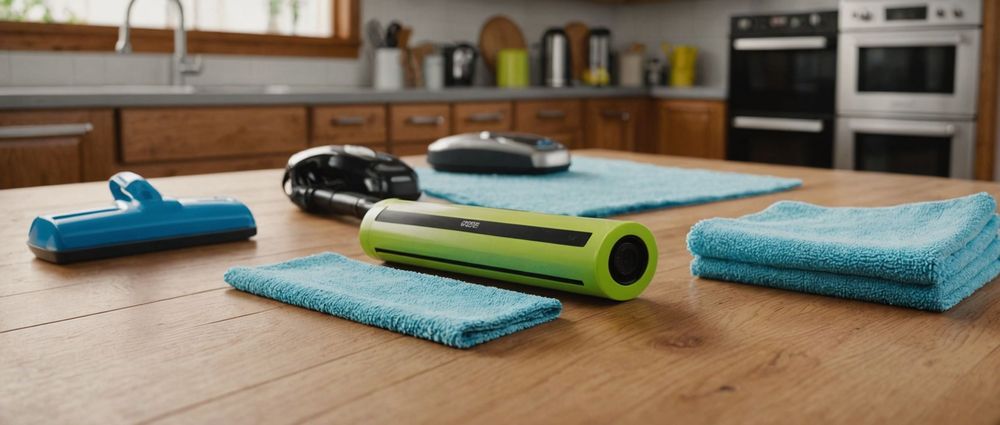Cleaning hard-to-reach areas of your home can be challenging, but it’s essential for maintaining a healthy environment. These often-overlooked spaces, such as behind furniture, under appliances, and on high shelves, can accumulate dust and dirt over time. Fortunately, with the right tools and techniques, you can effectively tackle these hidden dirt traps and improve your indoor air quality. In this article, we will explore various methods and tools to ensure every nook and cranny in your home stays clean and dust-free.
Understanding the Importance of Cleaning Hidden Areas

Dust and dirt accumulate in hard-to-reach places for several reasons. Firstly, these areas are typically neglected during regular cleaning routines, allowing dirt to build up unnoticed. Secondly, dust from everyday activities can easily settle into corners and tight spots, making it even harder to see. Additionally, some pollutants can exacerbate allergies and respiratory issues, making regular cleaning crucial for your health. Improving indoor air quality is essential, especially for families with children or individuals with allergies. Lastly, maintaining a clean living space can significantly enhance the overall aesthetic and comfort of your home.
Top Tools for Cleaning Hidden Dust and Dirt

To clean hard-to-reach areas effectively, you’ll need the right tools. Here are some must-have items that can make the process easier:
- Microfiber Cloths: Great for dusting without leaving particles behind.
- Extendable Dusters: Perfect for reaching high shelves and ceiling fans.
- Vacuum with Attachments: Ideal for crevices, corners, and tight spaces.
- Long-Reach Brushes: Useful for cleaning baseboards and behind furniture.
- Handheld Steam Cleaner: Excellent for sanitizing and loosening tough dirt.
Investing in these tools can save you time and energy while ensuring efficient cleaning results. The right equipment allows you to access hard-to-reach areas more comfortably and effectively, reducing the buildup of dust and allergens.
Effective Cleaning Techniques to Reach Hidden Spaces
Once you have the right tools, it’s important to know how to use them effectively. Here are some techniques for cleaning hard-to-reach dirt:
- Dust First: Begin by dusting surfaces before vacuuming, as this reduces the chances of dust settling on cleaned areas.
- Move Furniture: Don’t hesitate to shift furniture when cleaning to access areas that are typically blocked.
- Use the Vacuum Properly: Utilize attachments like the crevice tool to clean deep corners where dust can hide.
- Employ Lint Rollers: For delicate items like lampshades or book covers, a lint roller can effectively lift dust in hard-to-reach areas.
- Focus on High Places: Make cleaning a habit by using an extendable duster for ceiling fans and light fixtures regularly.
Establishing a Cleaning Routine
Creating a regular cleaning schedule can help ensure hard-to-reach areas are not neglected. Aim to incorporate dusting and vacuuming of these spaces into your weekly cleaning routine. You can set aside a specific day each month to focus on the deeper clean—moving furniture and appliances as needed. It may also be beneficial to involve the entire family in the cleaning process, breaking down tasks to make it manageable. Consistency is key; the more frequently you address these areas, the less dust will accumulate. Additionally, consider keeping a checklist of areas to cover each cleaning session to ensure no spot is overlooked.
Conclusion
Cleaning hard-to-reach dust and dirt is essential for maintaining a healthy living environment. By understanding the importance of these tasks, investing in the right tools, and employing effective cleaning techniques, you can eliminate accumulated dirt in your home. Establishing a routine ensures that these areas remain clean and safe, contributing to overall wellness and comfort. A clean home not only looks great but also promotes better air quality and a more enjoyable living space. Don’t underestimate the impact of regularly addressing hard-to-reach areas; the results will significantly enhance your quality of life.
FAQs
1. How often should I clean hard-to-reach areas?
It’s recommended to clean hard-to-reach areas at least once a month to prevent the buildup of dust and dirt.
2. Can I use regular cleaning products for hard-to-reach areas?
Yes, but it’s often best to use specialized tools and cleaners designed for specific surfaces and types of dirt in those areas.
3. What’s the best way to clean high shelves?
Using an extendable duster or microfiber cloth attached to a pole is the most effective method for cleaning high shelves safely.
4. Are there any natural cleaning solutions I can use?
Yes! Common household items like vinegar and baking soda can be effective for cleaning various surfaces and eliminating odors.
5. How can I encourage family members to help with cleaning?
Making cleaning a team effort by assigning specific tasks and setting up a reward system can motivate family members to participate.